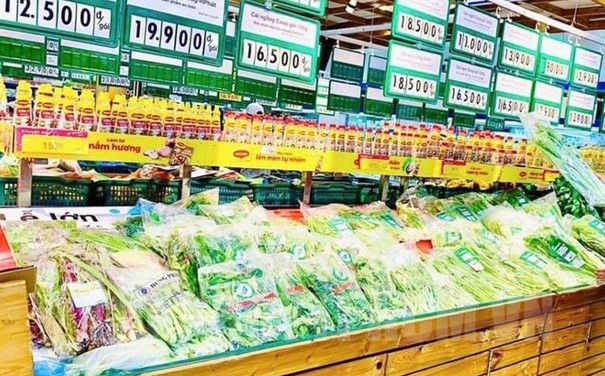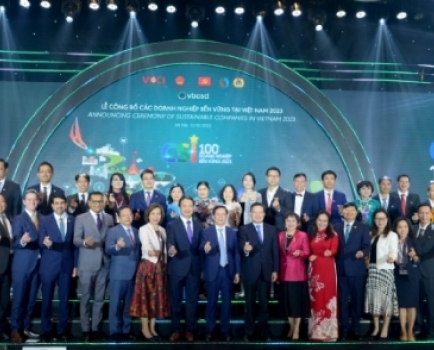VCCI: Proposal for additional regulations to exempt the requirement of adjusting prices when reducing VAT
Sat, 29 Jul 2023 14:06:00 | Print | Email Share:
The Vietnam Chamber of Commerce and Industry (VCCI) proposes the addition of guidelines for cases currently subject to price management when reducing VAT (Value Added Tax). The proposed direction is for businesses not to undergo price adjustment procedures and to be allowed to apply the registered and declared prices.
VCCI recently provided input on the draft Decree regulating the 2% reduction in VAT according to the Resolution of the National Assembly. According to VCCI, currently, certain types of goods and services are subject to price management measures, such as state pricing, registered prices, declared prices, and listed prices. The policy of reducing VAT from 10% to 8% on July 1, 2023, and increasing it from 8% to 10% on January 1, 2024, will have an impact on the implementation of the aforementioned price management measures.

VCCI is concerned about whether businesses that have declared and registered prices (including taxes) need to reduce their prices correspondingly by 2% due to the VAT (Value Added Tax) reduction. Should they still apply the old prices? Do businesses need to go through the procedures of adjusting the declared and registered prices?
For some types of goods and services, a 2% price reduction can be easily implemented. However, for certain types of goods and services with rounded prices for ease of payment, adjusting prices by a small margin (2%) may not be feasible. For instance, a postal and delivery business has declared a price of 5,000 dong per kilometer. Reducing it to 4,909 dong per kilometer will be quite cumbersome.
Therefore, VCCI proposes that the drafting agency should add guidelines for cases currently subject to price management when reducing VAT, allowing businesses not to undergo price adjustment procedures and to apply the previously declared and registered prices.
Regarding the responsibilities of state agencies, VCCI stated that Article 2.2 of the draft regulation states: "Functional ministries, tasks, and provincial People's Committees under the central government shall direct relevant agencies to implement propaganda, guidance, inspection, and supervision to help consumers understand and benefit from the VAT reduction as stipulated in Article 1 of this Decree."
VCCI believes that this regulation could lead to the interpretation that ministries and provincial People's Committees will inspect and monitor whether businesses have reduced their commodity prices in line with the tax reduction. This is not feasible and reasonable because market prices are determined through agreements between buyers and sellers. Therefore, VCCI proposes that the drafting agency remove the provision stated in Article 2.2 of the draft regulation.
Regarding the list of goods and services not eligible for the VAT reduction, VCCI also acknowledges that the reduction faces certain difficulties and obstacles, such as determining the VAT reduction for goods and services and describing the goods in the Annex attached to Decree 15/2022/NĐ-CP based on the current Vietnam Product Classification System, which may not correspond to the description of goods in the Vietnam Import and Export Commodity Classification, leading to difficulties in identifying the file codes for imported goods in the Annex, especially for goods with descriptions such as "goods... not yet classified."
VCCI's official letter states that in practice, businesses have also reported to VCCI that the classification of goods and services eligible for the 8% or 10% tax rate under Decree 15/2022/ND-CP is very complex and risky. Businesses are uncertain about whether they are implementing correctly or not. In many cases, two businesses engaged in trade are unable to agree on the application of the 8% or 10% tax rate, resulting in difficulties in fulfilling contracts.
The tax authorities and customs agencies themselves are also confused when it comes to classifying goods and services for application. This even poses the risk of confusion and negative implications as businesses may be subject to inspections based on different interpretations by state agencies.
The proposed addition to the regulation states, "File codes in Annex I and Annex III are for reference only. Determining the file codes for imported goods shall be carried out according to customs laws and regulations." However, according to VCCI, Annex I and Annex III still include cases without file codes but marked with (*), and the file codes will be declared based on the actual imported goods. This is a point that causes difficulties for import businesses as they have no basis to know whether their goods (which already have HS codes when imported) are listed in the Annex or not.
Therefore, VCCI states that many businesses suggest using the classification table for imported goods according to customs laws as a basis for developing Annex I and Annex III of this Decree, instead of using the current Vietnam Economic Sector Classification System. This solution could help imported goods easily determine their tax rates, instead of the current situation where both imported and domestically produced goods face difficulties in determining the tax rates.
In cases where there is not enough time to use the classification table for imported goods, it is necessary to provide a complete list of HS codes for imported goods subject to the 10% tax rate. In other words, all exceptional cases marked with (*) should be removed.
Source: An Nhien (Enterprise Finance Magazine).
By: Translator: LeAnh-Bizic
Source: https://vcci.com.vn/vcci-de-nghi-bo-sung-quy-dinh-khong-can-lam-thu-tuc-dieu-chinh-gia-khi-giam-thue-gtgt
---------------------------------------------
Same category News :













